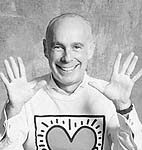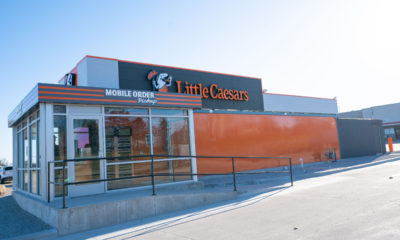Some say we're less and less of a democracy, as economics continue to divide us into rich and poor. The best-performing stores prove this: Madison Avenue shops and Wal-Mart do well, every time.
But product design is quickly and conclusively going democratic. Until now, good design has always belonged to the rich. If you were poor, you had to buy ugly. You shopped at grim (and gone) Montgomery Wards, or ancient Sears or pre-Martha Kmart. And you suffered. Good taste was for rich folks shopping in hushed department stores.
No more. Good design is not just for rich people anymore. Wow. Revolution.
It has been a long time coming. Thirty years ago, boutique flashpoints — like Habitat in King's Road, London — offered edited, stylish, cheap household goods. It was as though the world had never seen a good-looking placemat before (and they probably hadn't, unless they'd been deep down in designer frocks).
Other boutiques created little sparks of excitement. Design Research in New York introduced us to fine Scandinavian design. All we had ever seen before was dumbed-down, “Danish modern,” can't-take-another-dollar-out-of-the-cost, cheap and ugly. But somehow the idea spread. Crate & Barrel freely credits Scandinavia with the inspiration for its business — even including using the handsome crates the imports came in as display units, thus beginning the everlasting great visual presentation that trademarks Crate & Barrel.
Advertisement
Old Navy does it for fashion. So do thrift shops. IKEA does it. So does H&M (Swedish again!) — all successful aspects of cheap stuff at democratic prices.
Target is the best example of selling good design to the American mass market. Target saw the competitive edge in keeping cheap and adding design.
Like the toilet brush Michael Graves designed for Target. The toilet brush is surely one of the household's ugliest objects, even though in historic Connecticut these necessaries are hidden in trompe l'oeil containers cunningly color-coordinated with the toilet itself. And cost a lot of money. So the Michael Graves Target toilet brush is an emblem of the new design democracy. Now the retailer is introducing Mossimo clothing — with billion-dollar style ambitions.
And Martha Stewart does it for Kmart. (Nobody ever accused Kmart of good-looking merchandise until now.) Martha may have saved the store (there's Martha fallout in other departments), and the management is really smart to understand that product design drives customer excitement.
This trend is here to stay. It has everything to recommend it.
What are the dangers?
Advertisement
Well, watch the middle vanish from the marketplace. Success is either Wal-Mart or Tiffany. Gucci is doing fine. So is Target. They are brands that clarify the customer's choices. Nobody wants to be “the middle.” People never voluntarily describe themselves that way.
But “the middle” isn't doing fine! Department stores have tested the waters (their favorite method of daring). They're neither rich nor poor, so their customers are equally confused. This kind of confusion, especially in an age of infinite choice, sends the customer someplace else, searching for a clear message, as basic as Rich and Poor.
People will say that businesses based on quick trends (H&M? Old Navy?) are a risk. Well, any business is a risk if it can't connect with its customers. The biggest risk right now is to try being all things to all customers, because there is no such thing. Tiffany has been selling to the rich for 150 years and it just introduced a new diamond cut, “Lucida,” the first new cut in 114 years. (The funny thing is, it's so famous and so clear that Everyone goes there, and it turns out to be a very mass-market store — but of the highest quality.)
Design democracy is hot news everywhere. Now there are transparent berry-tone steam irons, transparent music systems, see-through scooters, jewelry, telephones, bath-oil beads and probably breakfast cereal.
Ever since iMac turned its little computer into a rainbow of techie color, appliances and electronics have all gone translucent: the translucent Kodak Advantix camera (developed by Target)…function and fun…and see-through everything.
Ever since Morgans in New York, hotels are hot design magnets. Rich people used to have to stay in hotels that were traditional (Ritz, Four Seasons), cocooned in costly, comfortable, antiseptic splendor. But trace the short history of fine “designer” hotels that changed the world (and some of them deliberately cheap): Morgans, Royalton, Paramount, Mercer, Hudson (New York), Delano (South Beach), Mondrian, Standard (Los Angeles), Monaco, Trident (San Francisco) and W — in lots of cities, but each different, promising inconsistency and surprise! Each hotel is different, and every one an adventure. We look to names like Philippe Starck, Barbara Hulanicki, Chris Blackwell, Ian Schrager and Adam Tihany for design ideas and inspiration.
Advertisement
Suddenly, restaurants — anything designed by Adam Tihany, Barbara (Mrs. Wolfgang) Puck, Sam Lopata, or (in San Francisco) anything Pat Kuleto. The whole city of Las Vegas. Many of these designers have theatrical experience, and some cause visual revolutions — witness Julie Taymor and The Lion King.
Good new design sometimes comes from retail stores, but not as often as the talent would allow or the public would respond. Sony Metreon is a flawless marriage of product and display. But why is the list not longer? Why aren't retail stores the perfect design breeding ground, with their constant connection with customers? Whatever happened to retail corporate courage?
We the people now insist that the goods — and stores — look good, no matter what the price. This is new. And good. Three cheers for democracy in action.
Peter's current activities include presentations to The J. Jill Group in Boston. A videotape of Peter's inspiring keynote address to R.A.C. 2000, entitled “'A'Is for Attitude,” can be ordered from the Retail Advertising & Marketing Association (RAMA). Phone: 312-251-7262; fax 312-251-7269; Internet: www.ramarac.org. Comments? Contact Peter by e-mail at: jasminehill@thegrid.net.


 Headlines1 week ago
Headlines1 week ago
 Headlines1 week ago
Headlines1 week ago
 Headlines1 week ago
Headlines1 week ago
 Designer Dozen2 weeks ago
Designer Dozen2 weeks ago
 Headlines2 weeks ago
Headlines2 weeks ago
 Headlines5 days ago
Headlines5 days ago
 Headlines2 weeks ago
Headlines2 weeks ago














